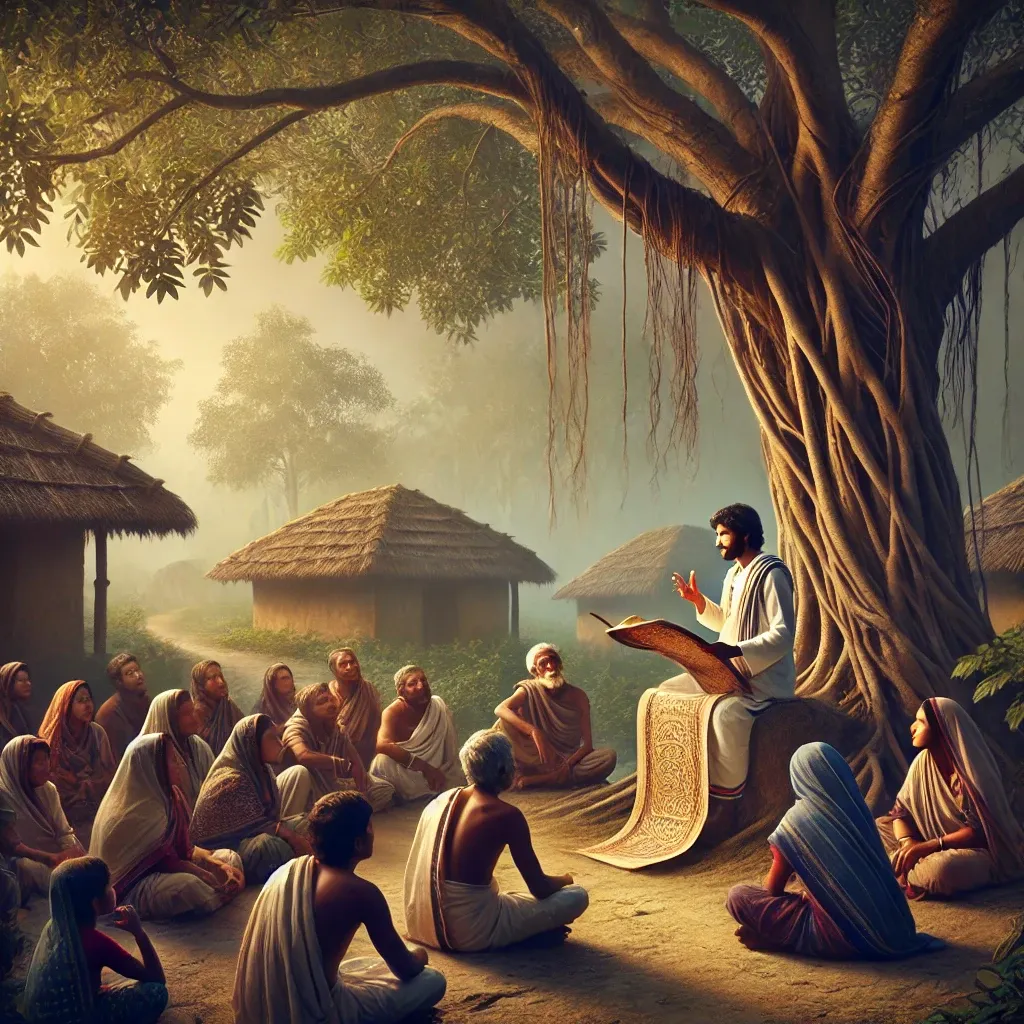

By Dr. Tim Orr
In Bengali culture, storytelling is much more than just entertainment—it’s a fundamental part of their way of life. From a young age, they are surrounded by stories that teach them about their history, values, and identity. Bengali Christians, have a unique opportunity to use storytelling to share the gospel in a way that resonates deeply with those around us. By weaving together the narratives of our faith and their culture, we can connect with others on a profound and personal level.
The Art of Storytelling
For Bengalis, storytelling is in their very nature. They grow up listening to tales from their grandparents, the writings of Rabindranath Tagore, and legends from their cultural heritage. These stories shape their understanding of the world and their place within it. As Christians, we can use this rich storytelling tradition to share the message of Jesus in a way that is both meaningful and relatable.
A Personal Story of Faith
I recall visiting my Bengali friend, Anik, who was grappling with a difficult decision. As we sat together over a cup of chai, I shared with him the story of David and Goliath—not just as a biblical tale, but as a narrative brimming with courage, faith, and trust in God. I related it to his own situation, encouraging him to trust in God’s strength and guidance. Anik was moved by the story and found renewed strength to face his challenges. It was a powerful reminder that stories have the ability to touch hearts and transform lives.
Connecting Faith with Culture
The Bible is full of stories—stories of God’s love, grace, and redemption. As Bengali Christians, we can draw on their cultural storytelling traditions to bring these biblical stories to life. By sharing them in a way that connects with the experiences and emotions of our listeners, we make the gospel message accessible and relevant.
A Story of Connection
Ron once had the opportunity to share the story of Jesus calming the storm with a Bengali family who had never heard the gospel before. I spoke about the fear and uncertainty that the disciples felt as the waves crashed around them, and how Jesus brought peace amidst the chaos. I related it to the storms of life that we all face and the peace that Jesus offers to those who trust in Him. As I told the story, he could see the family leaning in, captivated by the narrative and touched by its message. It was a powerful reminder that storytelling can be a bridge between faith and culture, opening hearts to the truth of the gospel.
Using Stories to Build Relationships
In Bengali culture, stories are not just about conveying information—they are about building relationships. When we share our stories, we invite others into our lives, our experiences, and our faith. Similarly, when we listen to the stories of others, we show them that we care about them and value their experiences. This relational approach to storytelling is a powerful way to share the gospel in a personal and meaningful way.
A Story of Building Relationships
I remember meeting a Bengali Muslim woman named Shahana at a community event. As we talked, she shared her struggles with anxiety and her search for peace. Instead of offering advice or solutions, I listened to her story and shared my own experience of finding peace in Jesus. I told her about a time when I was overwhelmed with fear and how Jesus met me in that place of darkness, bringing comfort and hope. Shahana was moved by my story and opened up more about her own journey. Over time, we developed a deep friendship, and she began to explore the Christian faith, drawn by the stories of Jesus that I shared with her.
Conclusion
Bengali Christians have a unique opportunity to use their cultural gift of storytelling to share the gospel in a way that resonates deeply with those around us. Let us tell the stories of Jesus with passion and authenticity, connecting our faith with their culture and building relationships that open doors to the gospel. In doing so, we can be powerful witnesses to the transforming power of the gospel and the beauty of their Bengali heritage.
The ideas in this article are mine, but AI assisted in writing this blog.
